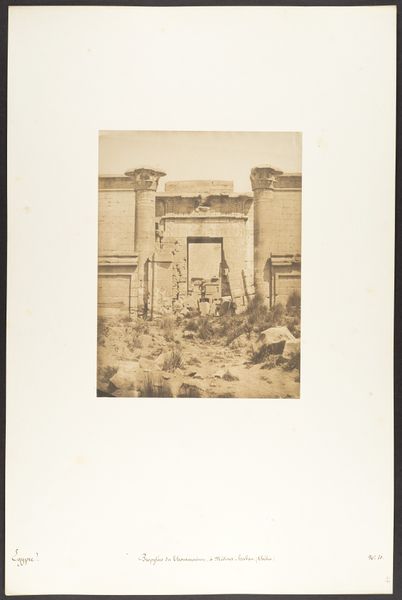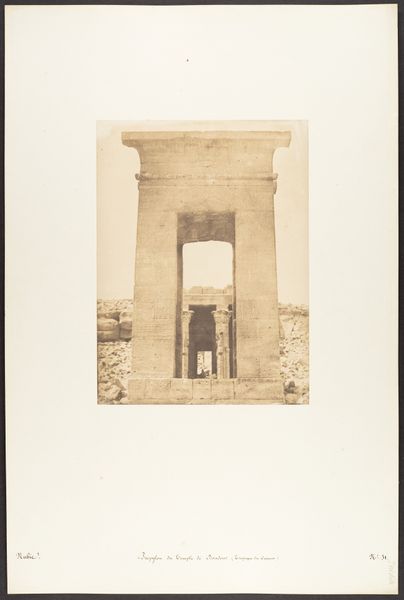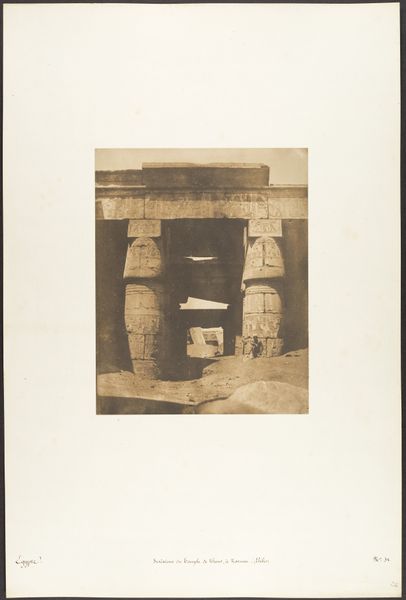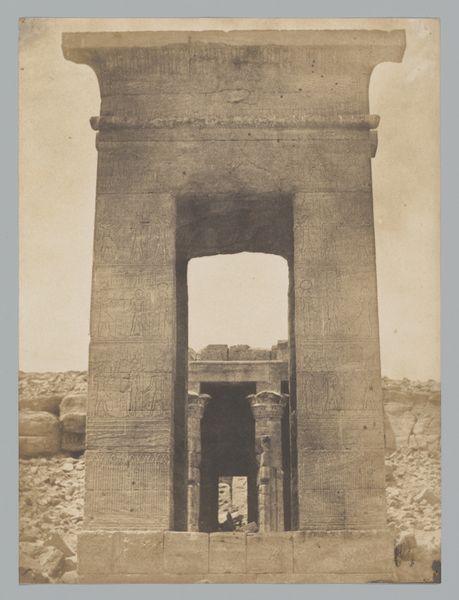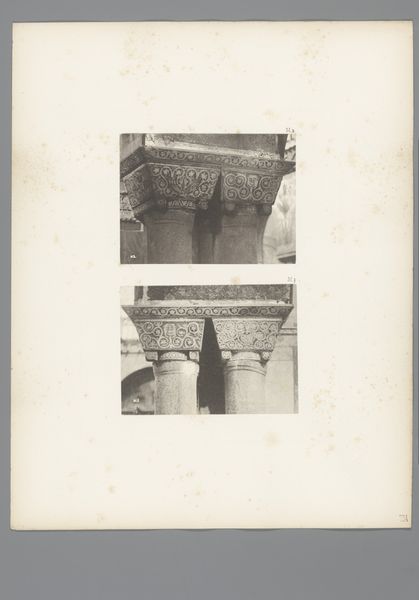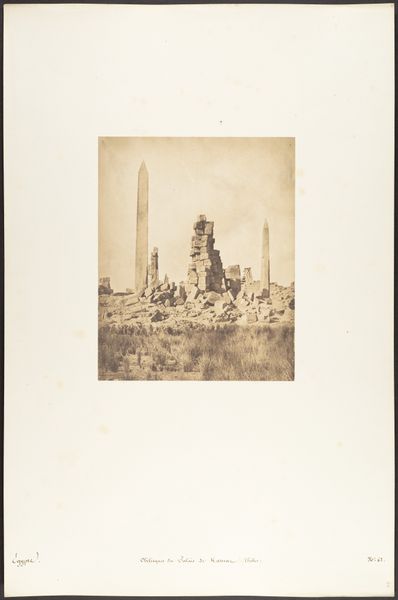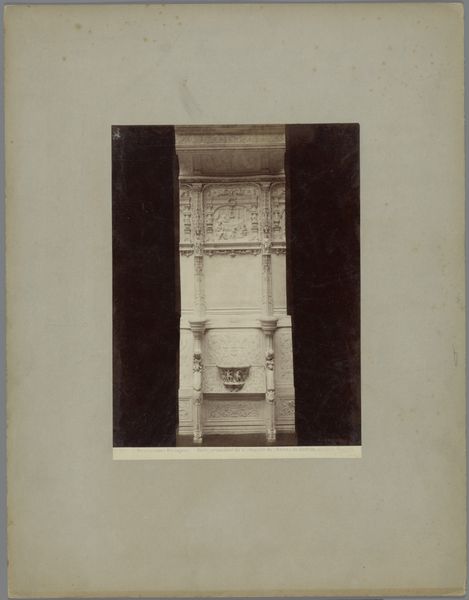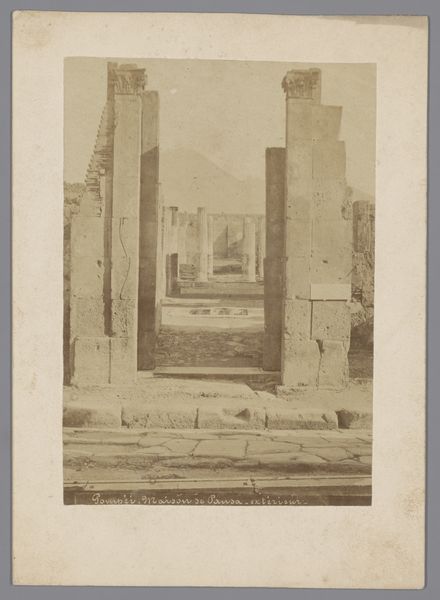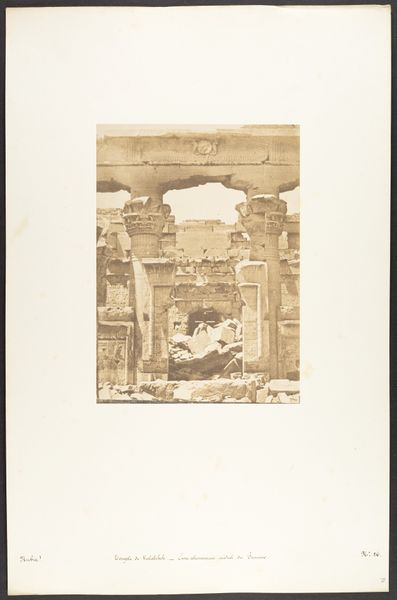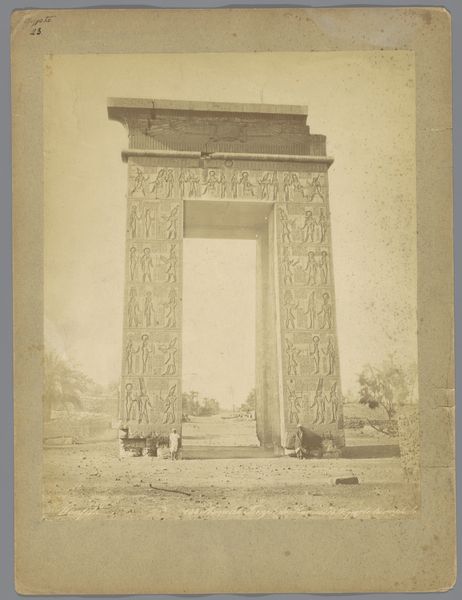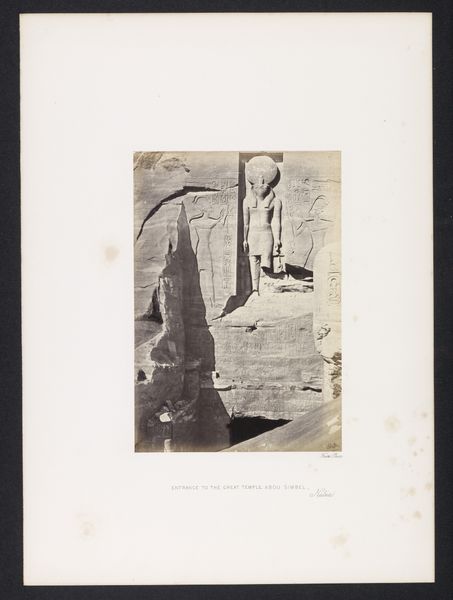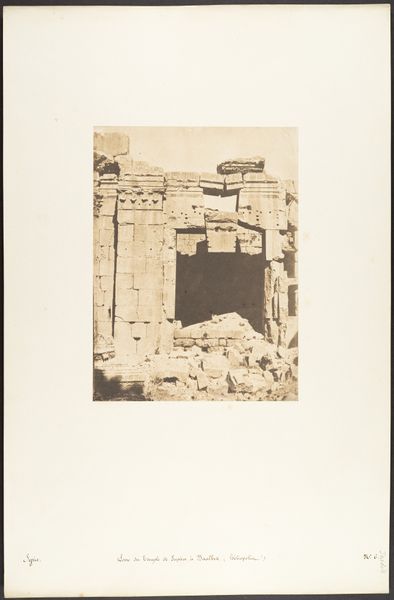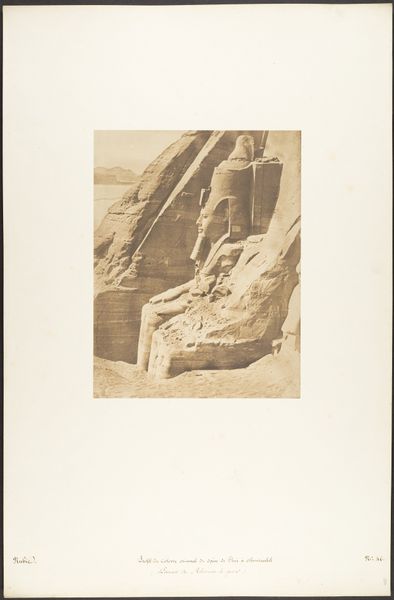
Propylone du Temple de Khons, à Karnac, Thèbes 1849 - 1850
0:00
0:00
print, daguerreotype, photography, architecture
# print
#
landscape
#
daguerreotype
#
ancient-egyptian-art
#
photography
#
architecture
Dimensions: Image: 7 11/16 × 6 5/16 in. (19.5 × 16 cm) Mount: 12 5/16 × 18 11/16 in. (31.2 × 47.5 cm)
Copyright: Public Domain
Maxime Du Camp made this photograph of the Propylon of the Temple of Khons at Karnak, Thebes, using a paper negative. Here we see a French photographer documenting the ancient monuments of Egypt, a practice tied to European colonialism. In the mid-19th century, Egypt was of great strategic importance to Britain and France, and this photograph reflects France's cultural and political interest in the region. The image creates meaning through its stark composition and the contrast between the massive temple structure and the seemingly barren landscape. This contrast underscores the grandeur of the past and perhaps, by implication, the potential for France to restore and learn from this ancient civilization. To understand this image better, we can research the history of French involvement in Egypt, the development of photography as a tool for documentation and exploration, and the cultural exchange between Europe and the Middle East during this period. This photograph is a testament to how art is always embedded in a specific social and institutional context.
Comments
No comments
Be the first to comment and join the conversation on the ultimate creative platform.
